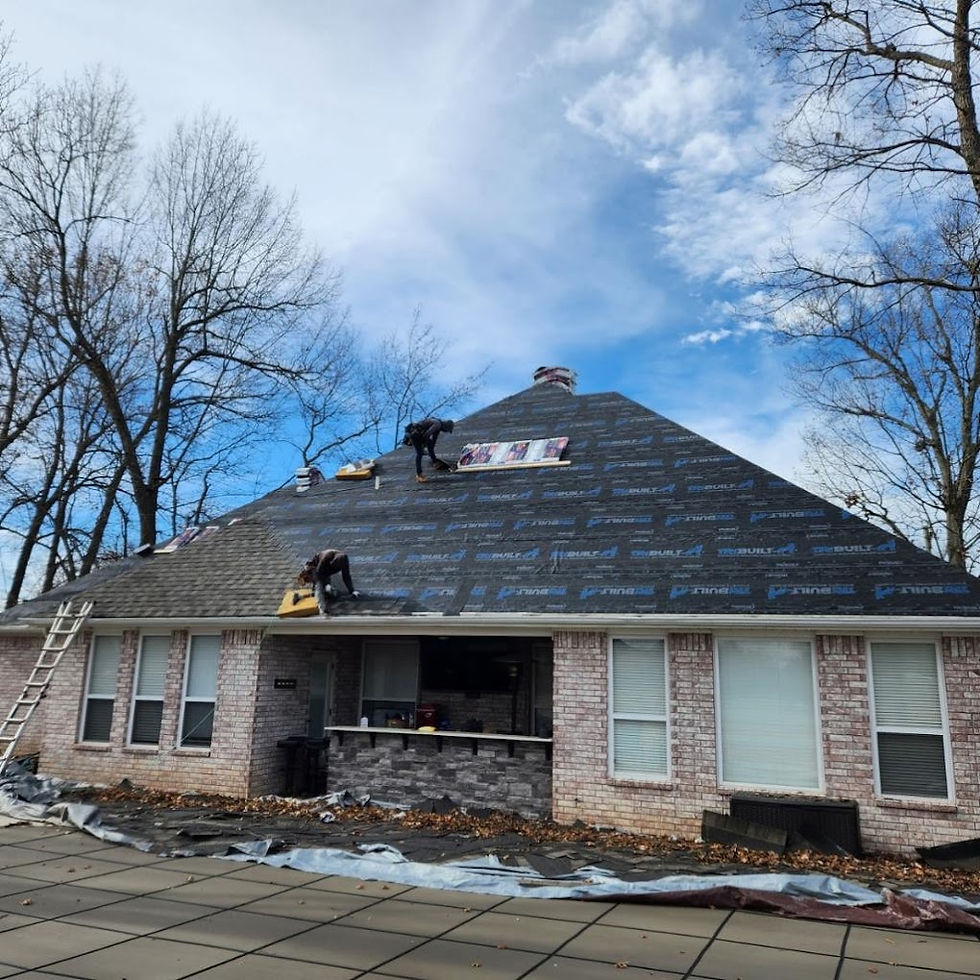Metal Roofing – What are the benefits?
- May 4
- 3 min read
The roof below one of our second-floor apartments in college was metal and was old and not insulated, so when it rained, it was initially difficult to get used to. Over time, we came to enjoy the water music that the old roof created. Today’s metal roofs are insulated for soundproofing and energy efficiency, so they aren’t as loud, but are still a pleasure to listen to. If you are considering a new roof, it is important to determine what roofing material is best for your property. Many folks are surprised to learn that metal sheets are not the only option. These days, there are many metal roofing styles to choose from. This blog will discuss metal roofing, its history, manufacturing process, and the pros and cons to help you decide which is best for you.

Metal Roof History
Metal roofing has been around for thousands of years. Did you know the Pantheon in Rome, built in 27 BC, had a copper roof on the circular temple dome, and it lasted for centuries. Copper and lead roofs were used in the Medieval and Renaissance periods for cathedrals, castles, and government buildings. The Industrial Revolution’s metal processing advancements expanded metal roofing options and developed tinplate, zinc, galvanized steel, and corrugated metal panels. These roofing materials became popular for their durability and affordability. In the 20th century, lightweight, easy-to-install panels gained popularity for commercial use, warehouses, and barns. Residential use increased when the appearance became more attractive. In the 21st century, modern metal roofs have become energy efficient, architecturally flexible, attractive, environmentally friendly, and more high-tech.
Metal Roofing Manufacturing Process
The manufacturing process of metal roofs entails the transformation of raw materials into panels or shingles. Metals most often used are steel, aluminum, zinc, or copper. Steel (galvanized or galvalume coated) is the most cost-effective and strongest. The raw materials are melted and rolled into large sheets at a rolling mill, standing seam, corrugated panels, or metal shingles or tiles can be forged. The sheets or tiles are then galvanized using a hot dip process, and a finish of durable paint or stone coating is applied to protect from rust, fading, and ultraviolet damage. Insulation and backing materials can also be added. The insulation increases energy efficiency and provides soundproofing. The installation process involves fasteners, clips, sealants, and sometimes underlayment.

Metal Roof Benefits
Though more expensive to install, the durability far outlasts typical roofing material. On average, a metal roof can last 40-70 years. They are highly weather resistant and can handle heavy rain, hail, and high winds, and most metal roofing materials have a Class A fire rating and are non-combustible. We all know metal gets hot in the sun, but metal roofs actually reflect solar radiant heat and can reduce cooling costs by 10-25%. A cool roof coating can further increase energy savings. Metal roof maintenance requirements are low; metal roofs are environmentally friendly, often made from 100% recyclable materials, and come in many colors and styles that can simulate shingles, slate, tile, or wood. There are cost savings with metal roofs, including less frequent replacements, less maintenance, lower energy bills, and, in hail-prone areas, potential insurance discounts.
Asphalt Shingle vs Metal Roofing
There are benefits to both asphalt shingles and metal roofs. Understanding the differences between the two is important so you can decide which roofing material is best for you. Asphalt roofs are less expensive upfront, are quieter, come in a wide array of colors and styles, and are a bit easier to install. However, asphalt shingles can require more maintenance, are less durable in storms, have minimal insulating benefits and can actually absorb heat which increases air conditioning use, overtime algae and staining can occur and are generally are not eco-friendly (11 million tons end up in landfills annually). Metal roofs can be twice the cost, but their longevity and durability far exceed asphalt shingles. They are environmentally friendly and energy efficient, most are highly impact resistant, and require little maintenance. A metal roof can require intensive labor, and some HOAs do not allow it. If softer metals such as aluminum or copper are used, they can dent on impact.
Neither metal nor asphalt roofing material is definitively better than the other. It all depends on your specific needs and budget. Metal roofs do provide increased longevity and durability. If you plan on owning your property for a long time, it will certainly save you on maintenance and utility costs over the long haul and they are eye catching. They certainly treat Mother Nature more kindly at the end of their life.
If you are considering a metal roof, we are a licensed roofing contractor. We can provide a free estimate for a metal roof for your property and answer any questions you may have.












Comments